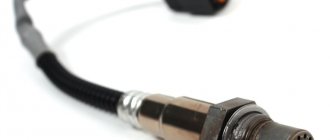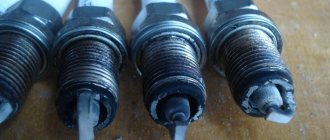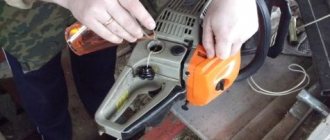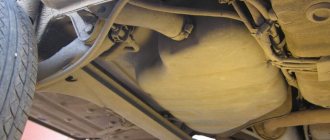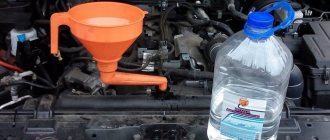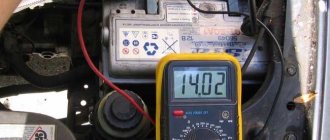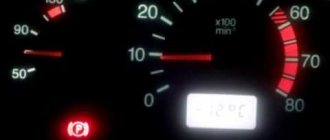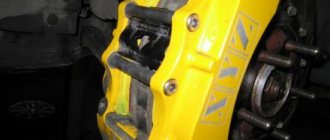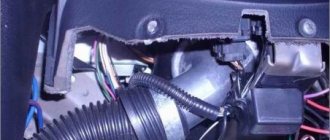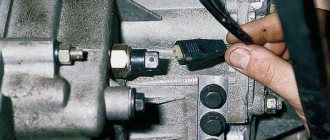Video: Why the VAZ 2109 Engine Detonates
Consequences of detonation
Don't expect detonation to increase engine power because the blast wave travels nearly 100 times faster. You can highlight the main disadvantages of detonation:
- The blast waves last 1/10000 seconds less, as long as the pressure acting on the piston increases. There is extremely little time to significantly increase engine power. But detonation will cause a lot of damage in such a period of time.
- When the engine is running, an oil film forms on the cylinder walls, which helps the pistons slide more smoothly, and the blast wave destroys it, leading to increased wear and deterioration of corrosion resistance.
- The pressure of the blast wave reaches 70 kgf/cm². Such pressure can cause destruction of the elements of the cylinder-piston group.
- Heat transfer to the cooling body is enhanced by blast waves. The engine overheats, the pistons crack, the head gasket fails, and the spark plugs fail.
If detonation of the VAZ 2109 engine has occurred, it must be eliminated, otherwise the service life of the engine and its components will be significantly reduced, and the cost of servicing the vehicle will become higher.
Detonation factors
There can be many reasons for their appearance, but they have one thing in common: the delay in spontaneous combustion of the air-fuel mixture (unburnt fraction) removed from the spark plug electrodes is reduced. If it is simpler, then all the conditions for oxidative processes take place in the combustion chambers. The occurrence of detonation is influenced by:
- Qualitative composition of the combustible mixture. If the air/gasoline ratio = 0.9, the fuel mixture, when entering the combustion chamber, forms pockets in different places. It is in them that oxidative reactions begin to occur, and later they become inflamed.
- Increasing the ignition time leads to the fact that the maximum pressure during combustion of the mixture is observed at the moment when the piston is almost at top dead center. As a result, pressure increases and detonation occurs.
- Too low octane number of gasoline affects the appearance of characteristic knocking sounds. If you fill up with AI-92 gasoline, then when AI-80 gets into the tank, the engine will change, and significantly. To avoid such problems, you need to buy fuel at a trusted gas station. Or option 2. Installing an octane corrector.
- The higher the compression ratio, the higher the octane number of gasoline.
The design features of the engine affect the occurrence of detonation, but to a lesser extent.
Preventing detonation
To avoid the appearance of blast waves in combustion chambers, it is necessary to eliminate all the factors described in the previous section. It is necessary to accelerate the combustion of the fuel mixture and slow down oxidation reactions, which are a source of spontaneous combustion. Explosive waves are detected by a VAZ 2109 knock sensor (injector), which is installed in the engine block between cylinders 2 and 3. This affects the phenomenon of the piezoelectric effect. When it hits an active element (membrane), a certain potential is generated. The stronger the impact, the greater the potential difference (voltage).
The electronic control unit reads the data and compares it with the fuel map (firmware). The readings of other sensors are analyzed in a similar way. As a result, the computer selects the most optimal engine operating mode from the fuel map and transmits signals to the actuators. Ignition timing, injector opening timing, etc. But if there is no knock sensor (on carburetor engines), the crankshaft speed must be increased. The oxidation reaction lasts less, the likelihood of spontaneous combustion decreases.
The VAZ 2109 knock sensor is installed only on injection engines. They are not on the carburetor, so you need to discover this phenomenon yourself. A common malfunction of nine is the appearance of detonation after turning off the ignition. The engine continues to run and the speed may change even if the key is removed. The reason is improper regulation of the quality composition of the fuel mixture. This happens in the following cases:
- Pollution of the energy system.
- Twisting the screw.
- Sensor malfunction (valve on carburetor engines) at idle speed.
On engines with injection, an idle speed regulator is installed, failure of which can cause detonation after shutdown; on carburetor valves, the valve cuts off the flow of gasoline into the combustion chamber at idle.
Engine detonation after turning off the ignition
One of the most unpleasant problems that a car owner may encounter is engine detonation after turning off the engine. The reason for this is the spontaneous combustion of the fuel after the engine operation is completed. As a result of which fires there is a very powerful physical impact on the cylinder, pistons, connecting rods, crankshaft and other parts, which can subsequently lead to a major overhaul of the entire car if this problem is not corrected in time.
How to determine spontaneous detonation
If after you turn off the ignition and you hear popping noises from the engine, then most likely you have this problem. We would like to draw your attention to the fact that this is not an immediate reaction. Popping noises can be heard for 20-40 seconds after the engine stops running.
Some drivers believe that this situation is the norm, but this is not the case. After turning off, there should be no sounds coming from the engine at all.
Why does detonation occur spontaneously?
There are only 3 main reasons:
1. The gasoline used is not the one recommended by the manufacturer. For example, if you pour AI-80 into an engine for which AI-92 gasoline is recommended, then detonation will be almost 100%
2. The candles have become unusable.
3. Ignition is set incorrectly
What to do in case of spontaneous detonation
If you have diagnosed that you have spontaneous detonation after turning off the ignition, then you should not put off solving this problem indefinitely, unless of course you want more serious problems in the future.
You need to do the following:
1. Check that you are using fuel recommended by your car manufacturer. If necessary, change the place where you refuel.
2. Replace the spark plugs. It is advisable to install spark plugs that are recommended by the manufacturer.
3. Set the ignition to medium settings
After the work is done, with almost 90% probability the problem will disappear. Otherwise, you will need to contact a car service.
Don’t forget to like if you liked the article, and also subscribe to our channel so as not to miss new articles.
Source
What is detonation of an internal combustion engine
Engine detonation is not a pleasant phenomenon. We will look at the causes of detonation at the end of the article, but first let’s understand what detonation is and what happens to the engine when it occurs.
Normal combustion of fuel in a cylinder is a chemical reaction that occurs in a mixture of gasoline vapor and air. In order for the process to begin, it is not enough to simply mix fuel with air in the required proportion; this substance must also be given the necessary energy.
In diesel engines, this creates a very high pressure on the combustible mixture and the temperature at the end of the compression stroke promotes ignition of the fuel. In gasoline engines, the mixture must be ignited with a spark, which is created using a car spark plug. The formed flame spreads from the electrodes of the car spark plug to the walls of the entire combustion chamber.
As long as the flame front moves from the spark plug to the distant zones of the combustion chamber, self-ignition may occur before the fire arrives. Undoubtedly, because of this, a weak shock wave arises, which meets the fuel prepared for ignition on its path.
When compressed, the combustible mixture immediately ignites. Simply put, this wave is detonation, the speed of its propagation in the engine cylinder reaches about 1000 m/s. This is several times faster than an ordinary fire front. You may hear a metallic sound when doing this.
This phenomenon manifests itself, as a rule, at medium and high engine speeds. Light and short-term loads do not have serious harmful effects. In addition, the closer the combustion conditions in the engine are to detonation, the higher its efficiency.
In diesel engines, the compression level is much higher, causing the fuel to heat up to five hundred degrees and self-ignite without the help of a spark. In gasoline engines, the compression level is much lower, and accordingly, the temperature in the cylinders is lower. In addition, the ability of gasoline to spontaneously ignite is lower than that of diesel fuel.
What is detonation?
Self-ignition in the combustion chamber of a combustible mixture, which has the nature of a blast wave, is a detonation process. Most often it appears during a sharp increase in load, for example, when driving uphill or during sudden acceleration. In these situations, the driver, as a rule, greatly increases the pressure on the gas pedal, which ensures that a rich mixture is supplied to the engine cylinders. After entering the cylinders and filling all its volumes with a rich combustible mixture, the action of high temperatures and pressure begins. Two reasons contribute to the creation of high pressure in the combustion chamber:
Engine detonation on VAZ 21093
A loud metallic knock, or “knock of fingers”, and theoretically - detonation, appears as a result of a large number of repeated impacts on the walls of the cylinders of the blast wave.
What can detonation lead to?
It is a mistake to think that increasing the speed at which the flame front propagates leads to a positive effect on increasing engine power. Everything happens exactly the opposite:
Such excess detonation of the VAZ 2109 engine significantly reduces the engine life of the unit, which means the cost of maintaining the car increases. Its consequences are clearly visible in the photo.
What to do if the engine knocks?
Detonation, as a rule, occurs under certain engine operating conditions, characterized by high engine speeds and increased load.
This could be a sudden start from a standstill, driving uphill, driving with a full load, etc.
To combat detonation, modern engines use a special sensor called a knock sensor. It monitors engine operating parameters, and in the event of detonation, changes the engine operating mode by changing the composition of the fuel mixture and ignition timing parameters.
However, if while driving you notice that the engine is knocking, then the first thing you need to do is change your driving style. Pressing the gas pedal as smoothly as possible, try to move off as smoothly as possible, reduce the speed, and climb hills in a lower gear (compared to the normal mode).
At the first opportunity, fill the tank with guaranteed good gasoline, purchased at an official gas station of the same Lukoil or BP. If the detonation does not stop, then go to a service center for diagnostics.
Consequences of detonation
If detonation occurs, the power of the power equipment is significantly reduced and fuel consumption increases significantly.
The engine cylinders are subject to a colossal load, which gradually leads to breakdown, and sometimes to complete destruction of the engine. The temperature in the cylinders increases to a critical level, therefore, the cylinder head gasket burns out. This element is the first thing that suffers when detonation occurs, since it is not able to withstand long-term mechanical and thermal stress.
Engine knock is a serious problem that may require replacement of the crankshaft, cylinder block, cylinder head, etc.
Why does the engine not stall after stopping it?
Although glow ignition is not fuel detonation, the appearance of a short circuit is often a consequence of engine detonation and the result of overheating of the power unit. The engine continues to run after the ignition is turned off for two main reasons:
- one of them is the so-called dieseling;
- the other acts as a short circuit (glow ignition);
Note that many car enthusiasts mistakenly confuse the concepts of glow ignition, diesel ignition and detonation. If the engine continues to operate after the ignition is turned off, the cause may be either a short circuit or diesel leakage. This phenomenon is somewhat different in nature from glow ignition, although it has similar symptoms.
Malfunctions of systems for cutting off fuel supply
To neutralize the effect when the engine does not stall after turning off the ignition, special devices are installed on carburetor cars. Such solutions are solenoid valves in the idle system, which turn off the gasoline supply.
Further development of the system led to the appearance of forced idle economizers on cars with a carburetor. The solution was created to save fuel, which is achieved by turning off the supply of the fuel-air mixture at the moment when engine braking occurs. This valve also shuts off the mixture supply after the ignition is turned off, which prevents further operation of the power unit as a result of self-ignition of the fuel. If such a system is installed on a car and the engine is running after the ignition is turned off, diagnostics of the economizer will be required. The EPH valve may jam, there may be a diaphragm rupture, etc.
This setting involves reducing the volume of the supplied mixture, as a result of which the temperature and pressure in the cylinders will decrease. When taking into account the use of the appropriate brand of gasoline, self-ignition of the mixture is excluded.
Spontaneous combustion of fuel and carbon deposits
One of the consequences of detonation and prolonged driving on low-octane fuel is increased carbon formation in the combustion chamber. A heavy layer of carbon deposits can cause a glow effect. In such conditions, the engine continues to operate even after the ignition is turned off.
This occurs due to the fact that ignition of the fuel mixture does not occur as a result of the formation of a spark, but from contact with the hot electrodes of the spark plug. The effect of spontaneous ignition as a result of smoldering carbon deposits or contact with a hot exhaust valve head is also possible.
To remove carbon deposits without serious intervention, various fuel additives are actively used, which are added directly to the fuel. Additionally, you can “clean” the engine by driving for 5-10 minutes in high gear and maximum speed. Note that these solutions are effective only under the condition of mild forms of coking. For more serious contamination of the combustion chamber, it is necessary to use the method of decoking the engine using active reagents or disassemble the internal combustion engine for mechanical cleaning.
Glow ignition and spark plugs
Often a short circuit occurs as a result of excessive heating of the spark plug insulator or electrode. The temperature of these elements directly depends on the surface size of the spark plug insulator skirt. A large surface area will mean that such candles are “hot”.
Highly accelerated units (atmospheric, low-volume with high power or equipped with turbocharging), as well as engines with high operating temperatures, require the installation of so-called “cold” spark plugs. Let us add that in order to prevent the occurrence of glow ignition and normal operation of the internal combustion engine, it is imperative to install spark plugs, the heat rating of which is recommended by the manufacturer for installation on a specific type of engine.
Other causes of short circuits
Intervention in the design (engine tuning) or repair work may be a reason that affects the glow ignition. Most often, a short circuit occurs as a result of an upward change in the compression ratio. An increase in the compression ratio may occur after an engine overhaul. Boring of cylinders, milling of the adjacent plane of the cylinder head and other manipulations can lead to an actual increase in the compression ratio, short circuit on a running engine and dieseling after it is stopped.
What could be the reason if the engine does not stall after turning off the ignition?
When you turn off the ignition, you expect the engine to stop! And you will be very upset if this does not happen. If the engine continues to operate the same way as before the ignition switch was turned off, as if it had never been turned off at all, then its fuel and ignition systems have not been turned off. In this case, your vehicle has electrical problems that need to be fixed. It is also possible that the ignition switch or power relay needs to be replaced.
In addition, it happens that the engine cannot stop immediately and instead begins to run jerkily, making knocking and squeaking sounds, also known as “dieseling” or “glow ignition”. This phenomenon occurs when there is something hot enough in the combustion chamber of the engine to ignite the residual fuel in the engine. The phenomenon received this name due to its similarity to the operation of a diesel engine, in which the fuel is ignited without the use of spark plugs powered by electrical energy. This usually does not happen with modern injection engines, but in the “dark” era of carburetors, drivers often encountered this problem.
Why do my fingers knock in the engine when accelerating? Let's understand the problem"
Why do my fingers knock in the engine when accelerating? Let's understand the problem Why do the fingers knock in the engine during acceleration?
To answer this question, you need to understand why this phenomenon occurs. In normal conditions, ignition of the combustible mixture occurs evenly. Explosive combustion of fuel begins near the spark plug and simultaneously spreads in different directions. The explosion propagation speed is about 20-30 m/sec. In the event of detonation, the over-enriched mixture begins to explode immediately after entering the combustion chamber. The blast wave moves chaotically, colliding with the walls of the cylinder, the remainder of the mixture explodes. The wave speed can reach 1000 m/sec.
Consequences
. As we have already found out, detonation is essentially uncontrolled combustion of fuel. At the same time, the cylinder walls heat up unevenly; in places where the blast wave hits, the temperature rises significantly. This can lead to deformation of the cylinder block. The piston may also overheat and become deformed. A blast wave under certain conditions can damage the valves. It can also damage the connecting rods. In any case, systematic and severe detonation will lead to the need for major engine repairs.
This phenomenon can be caused by a large number of factors. They have varying degrees of danger. Sometimes, a small detonation is quite acceptable. All possible options for the occurrence of this phenomenon will be discussed below.
The most harmless is detonation, which occurs with a sharp increase in speed. If you sharply press the gas pedal at 1000 rpm, accelerating the operation of the power unit to 4000-5000 rpm, you can hear a short-term detonation. This is quite a common occurrence. There is no need to be afraid of this; in this case, detonation will not lead to dire consequences. The reason is a sharp increase in the fuel supplied to the engine; the amount of air initially remains at the same level, this causes premature oxidation of the fuel, which is accompanied by explosions. The only way to combat this phenomenon is to avoid a sharp increase in speed.
But sometimes detonation can appear during normal operation of the power unit. In such cases, it is necessary to identify and eliminate the malfunction as quickly as possible. Otherwise, it will lead to engine repair. So, detonation may have the following reasons:
- Incorrectly set ignition timing. As this indicator increases, the point with maximum pressure during fuel combustion shifts to TDC. Because of this, increased pressure occurs in the cylinder, and accordingly appears. If you experience unexplained knocking noises, be sure to check that the ignition is working correctly;
Error in operation. If the fuel consumption sensor fails, the on-board computer may give erroneous commands. As a result, the engine begins not only to twitch, but also to detonate;
Almost all modern cars are equipped with a knock damping sensor. If you observe the phenomenon regularly, then check the condition of this small device. If necessary, you need to replace it;
Low octane number. Each car has its own compression ratio; accordingly, this indicator is calculated based on the fuel that will be used in the engine. The higher the compression ratio, the higher the octane number should be. If you fill the tank with fuel with a lower rating, an uncontrollable reaction will occur in the cylinder. If, in order to save money, you have filled with lower quality gasoline, then it is advisable to drain it and fill with fuel with a suitable octane number. Sometimes, a similar phenomenon may occur.
What factors influence the occurrence of detonation?
There are many factors that contribute to the occurrence of detonation. A common feature for all is a decrease in the delay of the combustible mixture for self-ignition of its unburned part, which is removed from the spark plug. In other words, creating favorable conditions in the combustion chamber to accelerate the oxidative reactions of the combustion mixture. Factors influencing detonation may be:
Tip: High-compression engines should use high-leaded gasoline.
Why is detonation really so bad?
The inner surface of the cylinder is always protected by a layer of oil. The blast wave generated during detonation can destroy the oil film. And this is already a phenomenon, that is, “erasing” the oil in any case leads to overheating. And then the metal is destroyed under the influence of the following factors: heating, increased shock loads.
Now let's see which parts suffer more from detonation. Their list is small:
- Gasket between the engine block and the cylinder head;
- Piston edges;
- Spark plug housing.
It seems that detonation, even if it occurs periodically, cannot destroy the piston. But this opinion is easy to refute:
The nature of destruction on the pistons is very important
If it’s the edge that’s been “blown away,” we see the result of detonation. Here's what can happen to the cylinder head gasket:
Such destruction can be detected by measuring pressure
In general, the list can be continued. Let's move on to watching the video.
Detonation.
Static
Young-green
I’ll say right away that I master the machine as problems arise. and as practice shows, it’s better to be able to do everything yourself.
find a normal car service very good. hard. I've been trying them out without success, I chose them by eye. it seemed like normal. in most services, it feels like they don’t want to do anything, I tell them my problem, they don’t even look at the car why and how (I believe that it is enough for an experienced person to look once, rather than listen to the wording of an illiterate person.). 3 services responded differently to my problem. So guess what to do and where. After all, you don’t really want to change working parts just like that, but you want to change and invest money in that spare part that you really don’t need to change.
and now to the problem) one fine day the car refused to start, no matter how hard it was, I didn’t care, I called my friends to pull the car to the service, but they helped me start it, it turned out that the spark plugs were flooding (press the gas pedal all the way and turn on the ignition +1 clever trick to add to the box) knowledge) after a while it refused to start again, I repeated the procedure and drove off. and a couple more times like this. I went to the service center on a whim, so to speak. We cleaned the carburetor, removed it, it turned out there was a small gap in the bottom cover (I don’t know where it came from, but judging by the almost torn threads on the mounting bolts. The previous owners did their best) and there were still no gaskets. There they found the same part from disassembly, they installed it, everything worked, the car started up with half a turn, beautiful) it started a day later. sometimes when turning off the car it began to shake sharply, and the engine might spit out or explode. After searching the Internet, I realized that this is detonation. I took a ride through the services and this is what I heard: - it’s because of the gasoline.. - it’s an electromagnetic valve, change it - you need to set the ignition later
No one looked or listened to the car.
How can you identify the problem yourself? my hands grow from where they need to, but I won’t get involved without a complete idea. But finding a competent specialist turned out to be a problem.
car VAZ 21099 97gv. carburetor.
ps sorry if it turned out to be an unnecessary burden =)
Salaga
Adjusting the ignition by light bulb
If the strobe light does not turn on or you simply do not have one, then a malfunction of the switch or other element that led to the need for adjustment can be solved using a light bulb. By the way, switch malfunction is a problem for many. So, to set the spark moment on the module you will need a regular 12 volt lamp. The procedure itself consists of setting the module torque by loosening the spark regulator lock.
The procedure is carried out as follows:
- To correctly set the spark torque on an internal combustion engine module with a carburetor, using a special key, you need to turn the crankshaft until the marks match. If you don’t have such a key (you need a special key), then put the car in fourth gear and move it until these marks coincide.
- You need to connect the prepared lamp to the wire that connects the distributor to the coil. Using the second wire, you need to connect the lamp to ground.
- Now you can connect the central cable to the vehicle ground, that is, to the car body. You should loosen the fixing screws on the distributor body, and then activate the ignition - if there are no problems, the lamp will light up.
- Next, in order to correctly set the spark on the module, you should rotate the housing to the right until the lamp goes out. When the lamp goes out, start turning the distributor to the left. You only need to stop when the light comes on. Try not to move the devices anymore, just tighten the case screws. The spark adjustment circuit on the carburetor using a lamp allows you to solve the problem of adjustment yourself, and you will not need to spend money on a device. In principle, any motorist can cope with such a task (the author of the video is Nail Poroshin).
Adjusting electronic ignition on VAZ 08-09
Many car enthusiasts are faced with the problem of adjusting electronic ignition on cars such as the VAZ 08-09.
Any car enthusiast can easily adjust the electronic ignition on the eight or nine, without a special device. The main thing is that you should at least know where to loosen the nuts of the electronic ignition distributor so that it can rotate, and I will explain the principle of adjustment.
In principle, this method of ignition adjustment can be applied to any make of car, GAZ, VAZ 01-07, etc. The main thing is to understand the principle.
I’ll explain right away, almost everyone confuses valve knocking with detonation or very early ignition, if the engine runs without knocking, but when you press the gas pedal, a knocking sound appears when the car accelerates, then disappears when the car accelerates, almost everyone thinks that it’s the valves knocking. No, this is detonation in the piston group, which is trying to break the pistons of your car, the valves have nothing to do with it, if you drive with such detonation, it will achieve its goal and break the pistons of your car. Another sign of very early ignition, black smoke coming from the muffler. Also, detonation in the piston group may occur due to low-quality gasoline; if this happens and you have filled with bad gasoline, accelerate the car smoothly so that there is no ringing in the engine.
On these cars, it is easiest to adjust the ignition without any instruments, which is good on the VAZ 08-09, it is impossible to set it incorrectly, the main thing is that the camshaft belt is installed correctly and the marks match exactly.
How to remove detonation and prevention methods
The choice of method for eliminating detonation depends on the reason that caused this process. In some cases, to get rid of it you have to perform two or more actions. In general, methods to combat detonation are:
- Use fuel with parameters recommended by the car manufacturer. In particular, this applies to the octane number (it cannot be underestimated). It is necessary to refuel at proven gas stations and not fill the tank with any surrogate. By the way, even some high-octane gasolines contain gas (propane or other) that unscrupulous manufacturers pump into it. This increases its octane number, but not for long, so try to pour high-quality fuel into the tank of your car.
- Set the ignition later. According to statistics, ignition problems are most often the cause of detonation.
- Perform decoking, clean the engine, that is, make the volume of the combustion chamber normal, without soot and dirt. This can be done independently in a garage, using special decarbonization products.
- Inspect the engine cooling system. In particular, check the condition of the radiator, pipes, and air filter (replace it if necessary). Also, do not forget to check the antifreeze level and its condition (if it has not been changed for a long time, then it is better to change it).
- For diesel engines, the fuel injection timing must be set correctly.
- Operate the car correctly, do not drive in high gears at low speed, do not reflash the ECU in order to save fuel.
As preventive measures, it can be advised to monitor the condition of the engine, periodically clean it, change the oil on time, perform decarbonization, and prevent overheating. Similarly, maintain the cooling system and its elements in good condition, change the filter and antifreeze on time. Another trick is that periodically you need to let the engine run at higher speeds (but without fanaticism!), This needs to be done in neutral gear. At the same time, under the influence of high temperature and load, various elements of dirt and debris fly out of the engine, that is, it is cleaned.
Detonation usually occurs when the engine is hot. In addition, it is more likely on engines that are operated at minimal loads. This is due to the fact that they have a lot of carbon deposits on their pistons and cylinder walls with all the ensuing consequences. And usually the engine knocks at low speeds. Therefore, try to operate the engine at medium speeds and with medium loads.
Separately, it is worth mentioning the knock sensor. The principle of its operation is based on the use of a piezoelectric element, which converts the mechanical effect on it into electric current. Therefore, checking its operation is quite simple.
The first method is using a multimeter operating in electrical resistance measurement mode. To do this, you need to disconnect the chip from the sensor and connect the multimeter probes instead
The value of its resistance will be visible on the device screen (in this case the value itself is not important)
Next, use a wrench or other heavy object to hit the DD fastening bolt (however, be careful not to overdo it!). If the sensor is working properly, it will perceive the impact as detonation and change its resistance, which can be judged by the readings of the device
After a couple of seconds, the resistance value should return to its original position. If this does not happen, the sensor is faulty
If the sensor is working properly, it will perceive the impact as detonation and change its resistance, which can be judged by the readings of the device. After a couple of seconds, the resistance value should return to its original position. If this does not happen, the sensor is faulty.
The second verification method is simpler. To do this, you need to start the engine and set its speed to somewhere around 2000 rpm. Open the hood and use the same key or a small hammer to hit the sensor mount. A working sensor should perceive this as detonation and report this to the ECU. The control unit will then give a command to reduce engine speed, which can be clearly heard by ear. Likewise, if this does not happen, the sensor is faulty. This unit cannot be repaired, and it only needs to be replaced entirely, fortunately, it is inexpensive
Please note that when installing a new sensor into its seat, it is necessary to ensure good contact between the sensor itself and its system. Otherwise it will not work correctly
Source
Detonation - what is it?
Detonation is simply improper combustion of the mixture. But if measures are not taken in time, then the detonation of a VAZ engine can have strong negative consequences. The peculiarity of this effect lies in the self-ignition of the combustible mixture due to exposure to high temperatures and pressure in the cylinders.
During normal engine operation, combustion of the combustible mixture occurs in three stages.
These waves lead to the destruction of the near-wall layers of gases, which ensures an increase in heat transfer, due to which the cylinder walls and other components of the CPG overheat. Also, the blast wave destroys the oil film of the walls, resulting in increased friction between the cylinders and rings. Detonation also has a mechanical effect on the elements of the piston group - a sharp increase in pressure leads to the appearance of shock loads on the piston bottom, valve, and cylinder walls, leading to their damage.
The figure shows how normal and detonation combustion of fuel occurs.
On the left – normal combustion; on the right – detonation combustion
Device and location
The knock sensor is enclosed in a housing, inside of which there is a plate - a piezoceramic element. This element is characterized by certain properties called the piezoelectric effect. Plus there is a resistor in the case. The power supply is connected to the sensor externally.
The device is located in the front part of the cylinder block of the VAZ 2109 power unit. It can be broadband or resonant. The first is located on a stud, secured with a nut size 22. The resonant type of sensor is screwed into the hole located under the stud.
Location
Signs of a malfunctioning knock sensor (DS)
Note that a malfunction of the motor drive can affect the performance of the power plant. The fact is that if the ECU detects that it is not working, it will switch the engine operation to emergency mode, in which the ignition will be delayed in order to completely eliminate the possibility of detonation combustion.
Signs of a malfunction of the VAZ-2110 knock sensor are as follows:
- Unstable engine operation at idle;
- Decrease in engine power performance;
- Increased gasoline consumption;
- Difficulty starting the engine;
In general, everything that is a consequence of late ignition. Signs of a malfunction of the VAZ-2114 knock sensor or any other VAZ injection model are identical.
But such signs can be given not only by the DD, but also by other sensors responsible for the operation of the power system, so it is important to know how to check the knock sensor of the VAZ-2110. Otherwise, you can spend a long time looking for the cause of the motor’s malfunction. Often car owners do not pay attention specifically to the DD, sinning on other elements.
Can a car engine detonate when turned off: let’s understand the aspects
It is wrong to classify uneven engine operation or any other knocking as a sign of detonation. To avoid mistakes, the best option would be to find out what the detonation mode sounds like in practice. For example, watch thematic video files.
Dieseling
As already noted, an undesirable phenomenon can appear exclusively on a functioning motor. How then to qualify the operation of the power plant with the ignition off? The mechanics' answer is short - dieseling. Its nature is different: self-ignition of gasoline, identical to the working process of a diesel engine.
Beginners who have caught up on their knowledge base on gasoline internal combustion engines will immediately object, citing a couple of arguments “against”: high-octane fuel has poor self-ignition ability, and the compression ratio in a gasoline engine is lower. All this is true, but when the unit is stopped, favorable conditions are created for dieseling.
- Fuel supply to the cylinders.
- Low crankshaft speed.
In reality the process looks like this. The power plant is turned off, the crankshaft rotation speed drops, fuel is supplied. The time allotted for ignition of the mixture increases.
Under such conditions, a spark from a spark plug is not needed to ignite the fuel - a gradual increase in pressure and temperature is sufficient. After completing the power stroke, the crankshaft speed increases, and self-ignition does not occur. Then the frequency drops again and dieseling occurs again. And so on for several cycles of “twitching”.
Harm or benefit
Unlike knocking when rocking the steering wheel, there is nothing dangerous about the engine running unstably after being de-energized. On the contrary, the presence of this effect indirectly confirms the good tightness of the combustion chamber, which indicates the general serviceability of the internal combustion engine. This phenomenon can only occur on carburetor engines, because on injection power plants the fuel supply stops when the ignition is turned off.
Hence the conclusion - the absence of twitching after stopping the unit is not at all a sign of poor condition. By the way, a properly tuned and well-maintained carburetor protects the engine from diesel build-up. This is realized using the electromagnetic valve of the EPH system, which, in good condition, shuts off the supply of fuel to the cylinders when the internal combustion engine is turned off.
Isn't this a glow ignition?
Experienced drivers often replace the concept of diesel engine with glow ignition (KI), which is fundamentally considered incorrect. Elementary differences are revealed by the definition of a short circuit - this is the ignition of the fuel-air mixture from a heated source, which can be:
- Overheated spark plug surface.
- Exhaust valve.
- Nagar.
As has already been determined, the engine shows signs of detonation during shutdown due to self-ignition of the fuel assembly during its compression (the spark plug is de-energized).
Glow ignition implies the presence of deviations precisely when the spark plug is working: heated surfaces or a layer of carbon deposits ignite the mixture earlier than necessary. The consequences of a short circuit are dangerous. It may cause:
- Melting of candles.
- Overheating of pistons.
- Valves melting.
It is noteworthy that the “glow” motors operate stably throughout the entire operating speed range. Stability is explained by the fact that the temperature of a heated source continues to increase and maintain.
Detonation as it is
Detonation as it is
Detonation can occur for several reasons with similar symptoms, but the consequences can be much worse. During detonation, a huge amount of heat is released uncontrollably, catalyzing the combustion process of the fuel-air mixture.
Main causes of detonation
With similar symptoms, the causes of detonation may be:
- Using fuel with a low octane rating and lower knock resistance than recommended by the engine manufacturer. In this case, detonation occurs due to a mismatch between the compression ratio and the type of gasoline or diesel fuel - they spontaneously ignite without sparking, due to the high compression ratio and high temperature in the combustion chamber. To avoid detonation processes, it is enough to fill the car with gasoline with exactly the same octane number as indicated by the manufacturer.
- In addition, the quality of the fuel , the presence of impurities, water, and solid fractions in it are also important. Ignition too early can also cause detonation due to a violation of the temperature regime in the combustion chamber. In this case, the working mixture also burns uncontrollably, since the parts of the cylinder-piston group are overheated. The glow number of the spark plugs does not correspond to the manufacturer’s recommendations. In principle, there are no wrong spark plugs, they simply may not correspond to the operating modes of a particular engine, become hot and also cause detonation, the fuel will burn without sparking.
- Carbon deposits in the combustion chamber , on the piston bottom, and on the valves lead to a decrease in the volume of the combustion chamber, and this, in turn, increases the compression ratio. In this case, even with good gasoline that matches the engine, detonation may occur. Motorists cite several reasons for the formation of carbon deposits, including operating the engine under low load conditions. To prevent the occurrence of carbon deposits, it is advisable to let the engine periodically run under heavy load, at high speeds.
- Engine overheating . If we are confident in the quality of the fuel, in the condition of the cylinder-piston group and in the correctly set ignition timing, it is worth paying attention to the cooling system: the level of antifreeze, the correct operation of the thermostat, as well as the quality of the coolant, the cleanliness of the cooling radiator, the operation of the electric radiator cooling fan .
Detonation can cause engine damage
Any of the listed reasons, and even more so, their complex, can cause detonation after the ignition is turned off, which can lead to complete destruction of the engine.
What is detonation and how to determine it
Definition and essence
Detonation is the process of combustion of a fuel-air mixture at a critically high speed, leading to a sharp increase in pressure and temperature. The phenomenon occurs at the stage of a sharp increase in pressure in the cylinder and combustion of the mixture in the near-wall layers during the compression stroke.
Instant combustion of prepared products causes shock waves to propagate in the combustion chamber at speeds of up to 1,200 m/s. During conditioned combustion, shock waves also arise, but the intensity of their propagation does not exceed 50 m/s.
Knock VAZ 2109 | Repair VAZ 2108 2109 21099
Very often, when a hot VAZ 2109 engine is turned off, detonation occurs. That is, you turn off the ignition, and the engine continues to jerk for a few more seconds. The duration of this process is different for everyone; it can twitch in a second, or maybe in a few seconds. In general, this phenomenon is unpleasant and dangerous for the engine. It is dangerous for the engine to reduce engine life and risk premature failure. This is also unpleasant for the driver, and it’s a pity for the car, and passers-by take turns listening to the sound of the jerking engine.
Open hood of VAZ 2109
Moreover, this detonation does not always appear. If the engine does not heat up to 90 degrees, detonation may not occur; if the engine is hot, detonation is more likely. Let's consider the reasons for detonation of the VAZ 2109 engine after turning off the ignition.
1) The idle speed solenoid valve does not hold. After turning off the ignition, set the valve. Turn off the fuel supply to the carburetor. If the valve is not retained or screwed all the way into the carburetor, engine vacuum through the idle fuel passage will suck gasoline into the hot engine.
Briefly about the main thing
After stopping the engine, there can be no detonation - this unstable “jerking” is called dieseling. This phenomenon does not carry anything dangerous in itself. The reason for its appearance is the flow of fuel into the cylinders when the ignition is turned off. It occurs, as a rule, on carburetor engines with a faulty EMC.
Detonation occurs exclusively when the engine is running and is accompanied by a characteristic metallic ringing. It appears when driving at low speeds under load, when starting off, after refueling with low-octane gasoline and due to incorrect setting of the ignition timing on a carburetor engine. On an injection power plant, the engine knock sensor and the ECU are responsible for the latter.
Source
Power unit VAZ 2109 carburetor troits, twitches, does not pull: causes and methods of elimination
Installing an engine on a VAZ 2109
For a VAZ 2109 car, the main power unit is the engine. The service life of the entire vehicle and traffic safety depend on its reliable operation. The appearance of a loud metallic knock, a noticeable decrease in power, instability in engine operation, emissions of black smoke from the exhaust pipe, a decrease in the temperature of the exhaust gases may indicate that engine detonation has occurred on the VAZ 2109. The article suggests getting acquainted with its consequences and methods of dealing with it yourself.
Factors affecting detonation
There may be many reasons for the appearance, but they have one thing in common - the delay in spontaneous combustion of the air-fuel mixture (unburned portion) removed from the electrodes of the spark plug is reduced. To put it simply, all the conditions appear in the combustion chambers for oxidative processes to occur. The occurrence of detonation is affected by:
- Qualitative composition of the combustible mixture. If the air/gasoline ratio = 0.9, then the fuel mixture, when it enters the combustion chambers, forms pockets in various places. It is in them that oxidative reactions begin to occur, and they subsequently ignite.
- The increased ignition timing leads to the fact that the maximum pressure during combustion of the mixture is observed at the moment when the piston is almost at top dead center. As a result, the pressure increases and detonation occurs.
- Too low octane number of gasoline affects the appearance of characteristic knocking sounds. If you refuel with AI-92 gasoline, then when AI-80 enters the tank, the operation of the engine will change, and significantly. To avoid such problems, you need to buy fuel at trusted gas stations. Or option 2 - installing an octane corrector.
- The higher the compression ratio, the higher the octane number the gasoline should have.
The design features of the engine affect the occurrence of detonation, but to a lesser extent.
